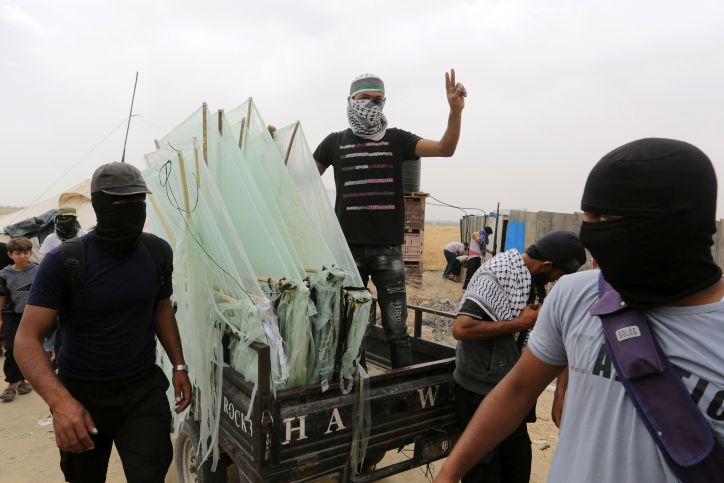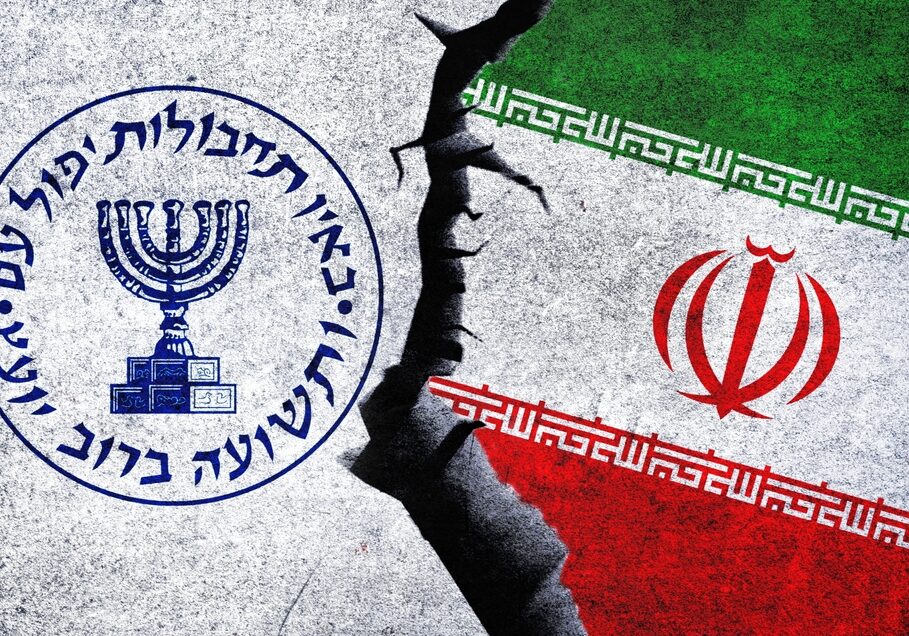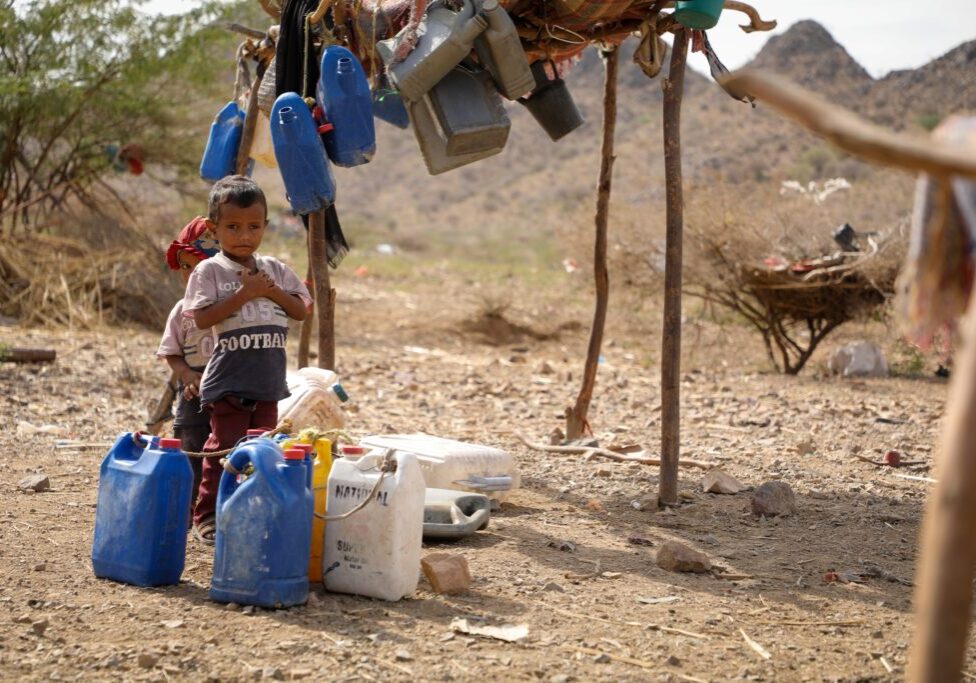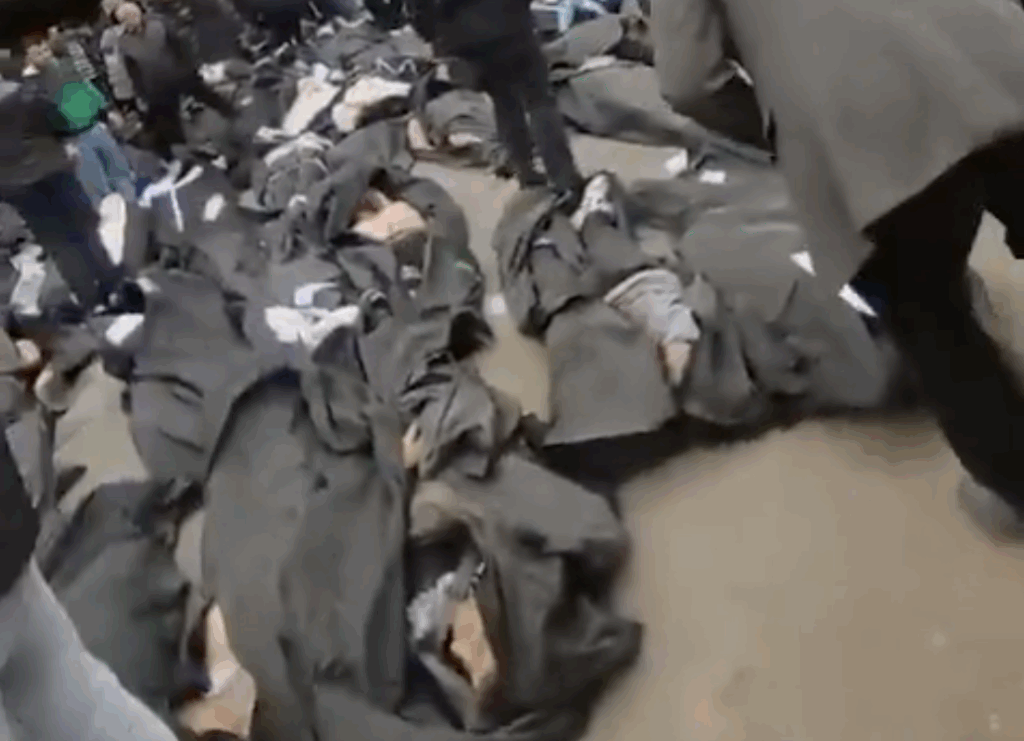FRESH AIR
Hamas rolls out new terror innovation: the “Molotov kite”
June 8, 2018 | Ahron Shapiro and AIJAC Staff

Beginning in late March, Gaza’s so-called “March of Return” protests have featured two major Hamas-orchestrated tactical offensives.
The first, mass infiltration attempts by storming the border fence at ground level, has led to over 100 Palestinian deaths (mostly members of Hamas and other terror groups) as Israel defended its border.
The second, a campaign to burn Israeli crops and forests by air using an unusual weapon of arson – flaming “Molotov kites” or balloons riding the prevailing westerly sea breeze over the border, has destroyed thousands of acres of agricultural land so far, causing millions of dollars of damage in what has been described as an act of ecological and agricultural terrorism. Though it has, as of yet, led to neither Israeli nor Palestinian deaths, this is expected to change.
This is because Hamas is constantly improving the range and camouflage of its kites – a form of drone warfare – and Israeli intelligence believes Hamas intends to eventually mount explosive charges on the “drones” to make them more deadly.
Humble origins
While Israeli intelligence believes the idea for militarising kites by Hamas goes back a couple of years, it would appear that the popularisation of kite-flying in Gaza has innocuous origins. In 2011, the United Nations Relief and Works Agency (UNRWA) held a morale-boosting campaign for youth, setting a world record with 13,000 kites being flown simultaneously.
This event was later followed up by the donation of thousands of kites to Gazans by Japan in 2015 – Japan having cultural traditions of kite-flying dating back to ancient times as part of celebrations, commemorations and as a gesture of gratitude.
Not a toy
Today’s kites and balloons are no expression of peaceful protest – they’re being used as dangerous weapons of war.
What happened to those Japanese kites? According to reports, many of them have been modified and used for arson.
According to the Israeli daily business newspaper Globes:
In March, Japan gave UNRWA 1,000 kites to refugee camp children, and dozens of these kites found their way to Israel carrying Molotov cocktails that caused the burning of wheat, straw and other fields in the communities surrounding the Gaza Strip.
These sort of modifications and the skill to fly the kites into Israel effectively suggest a level of training on an institutional level. The operator of the kite needs to have some meteorological understanding of wind patterns. Then, the devices themselves must be launched effectively at the perfect moment and catching just enough wind to reach an ideal altitude for causing maximum damage. In Gaza, Hamas (and other major terror organisations) are the main players with such levels of engineering expertise. Its ranks are full of highly skilled terrorists, with vast experience in developing and launching explosive devices.
In fact, there is evidence that Hamas operatives, dressed as civilians and in some cases assisted by them, were the ones flying the kites across the Israeli border over the past few weeks during the riots. The trained kite units call themselves the “Sons of Zouari”. Mohamed Zouari was a Tunisian engineer with the Al-Qassam Brigades, who supervised the unmanned aircraft manufacturing program of Hamas, before his assassination in December 2016.
Also, IDF intelligence has tracked the trucks bringing the kites back to their warehouses and have targeted these storage facilities.

Masked Hamas members distribute mass-produced kites at the border. Source: Debka.com

Masked Hamas kite coordinator poses with indendiary kites likely held by civilians for purposes of the photograph. Source: Debka
The damage inflicted by these weapons is considerable, proof of their effectiveness at low cost. During recent weeks at least 600 flying objects of that kind were flown from the strip into Israel. Four hundred of them were shot down or intercepted by the Israeli army using various means, including special drones that cut the thread connecting the kites to the operator. The remaining 200 caused fires that incinerated 9,000 dunams (2500 acres) of agricultural lands and forests in Israel’s southern area bordering Gaza. Most of the harm was to wheat fields, as well as to irrigation systems and a plantation of the herbal medicinal plant, Jojoba.
In financial terms, so far, the total damage amounts to 5 million shekels (more than A1.8 million). Life-long work of growing food and other products for the benefit of humanity, was maliciously destroyed. The dedicated farmers are devastated.
Moreover, these arson attacks are eco-terrorism – a crime against nature,
Israel, in that desert area, may put at risk future viability of crops on these fields. Irrigation systems have also been affected. The flames that affected forested areas killed many different types of animals, threatening the ecological balance. Daniel Ben-David, KKL-JNF’s western Negev regional director, has told the Jerusalem Post that reforestation might take two decades and plenty of resources.
Terrorism is morally flawed; eco-terrorism may be one of the lowest forms of that tactic. By aiming to inflict damage on the environment, the harm is not limited to the targeted human population. Instead, plants, animals, eco-systems and future generations all bear the weight of that attack. Palestinians are no strangers to eco-terrorism. For example, in November 2016, about 15 Palestinians were among those responsible for major fires lit around Israel. And there was considerable incitement to encourage more arson attacks against Israel in the Arabic social media at that time.
It should be further noted that arson attacks against Israeli agricultural land have not been limited to the Gaza region but are a phenomenon that has affected all parts of Israel in recent years. (See here and here for two examples in recent weeks.
The issue was also discussed in the Knesset in mid-May.)
When it comes to Palestinian kite terrorism, lack of morality is no surprise. Swastikas were painted on kites flying towards Israel.
Further, ignoring Israel’s warning about the damage it causes to the quality of air breathed by Palestinians and Israelis alike, Palestinians burnt thousands of tyres during the recent round of riots, causing huge amounts of hazardous thick black smoke. The tyres, like the kites, did not materialise on the border, but were mobilised into place and lit on orders from Hamas, who even paid the rioters both to attend and involve themselves in violent activity.
Countering the threat
Yoni Ben-Menachem of the Jerusalem Center for Public Affairs, one of Israel’s top analysts on Palestinian issues, noted in a blog post on June 5 that the kite threat is becoming more serious by the day. He added that the IDF, working together with Israeli defence industries, has yet to formulate a truly effective countermeasure.
Ben-Menachem wrote:
Those who belittle burning kites will find themselves dealing with bomb-carrying drones. At the time, they scorned Qassam rockets in Israel and called them “flying pipes,” but over time their production became sophisticated and they became a dangerous weapon threatening the Israeli home front.
The IDF deals with the burning kites and the Palestinian drones by launching a large drone equipped with cutting blades, developed by the Israeli defense establishment, in order to cut, in mid-air, the wires in which the combustion materials are connected to the kites before they penetrate Israeli territory. This is a temporary solution that is not efficient enough, since the kite launchers simultaneously launch dozens of burning kites and succeed in infiltrating them into Israeli territory and causing damage.
Conclusion
Hamas’ “innovative” use of a child’s toy – a kite – as a weapon of war is shocking, but perhaps unsurprising given Hamas has used children on the front line against Israel, effectively as human shields, in contravention of the Convention on the Rights of a Child. (Also, please refer to my recent blog on this issue.)
Former Israeli Prime Minister Golda Meir was once famously quoted as saying that “Peace will come when the Arabs will love their children more than they hate us”. Sadly, that saying may now need a corollary – that they should also learn to respect the natural environment in the land Palestinians and Israelis must share before peace can be established between the two peoples.
Tags: Hamas
RELATED ARTICLES

Australian Jewish organisations will offer strong support to Royal Commission: Joel Burnie on Sky News






















